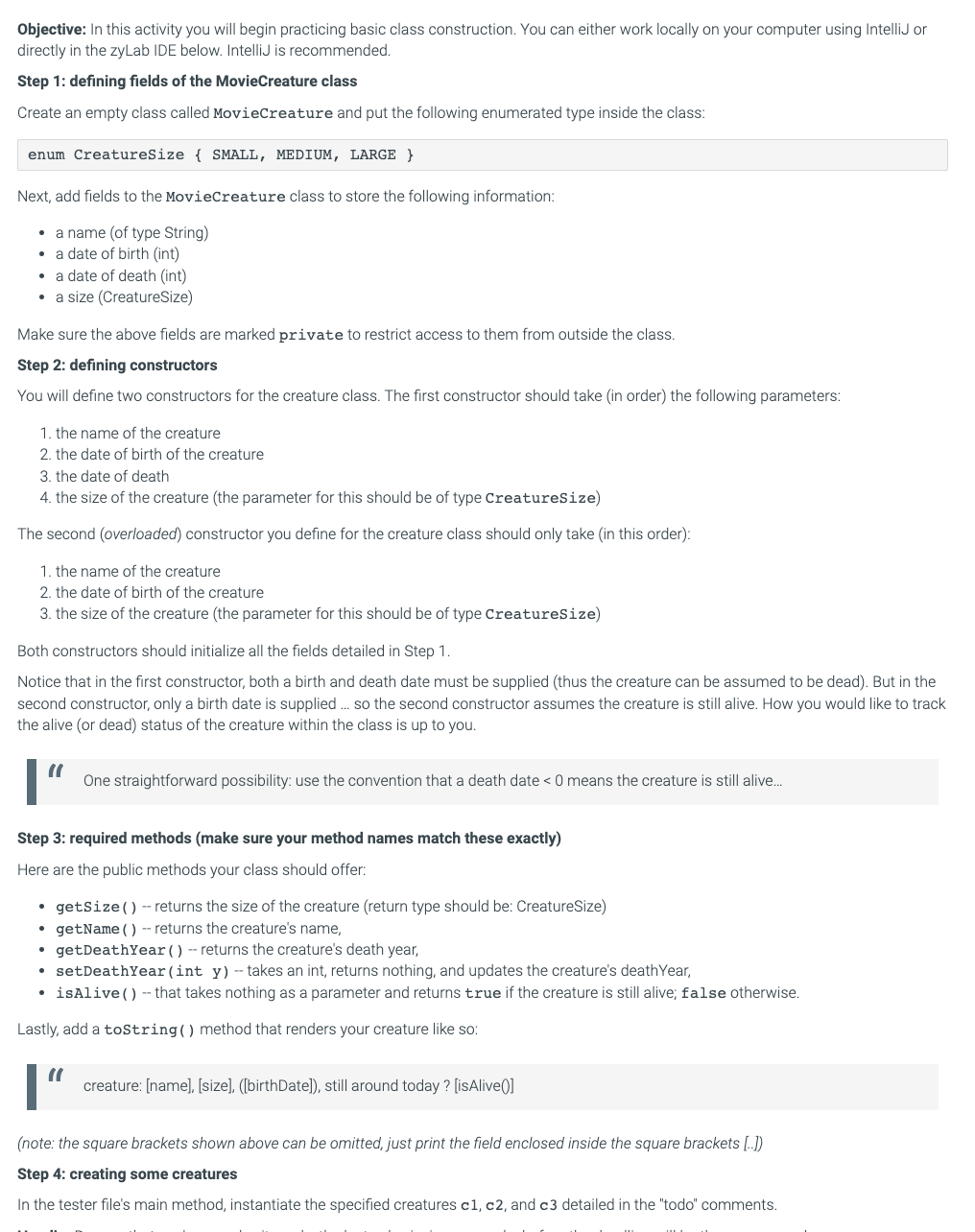Answered step by step
Verified Expert Solution
Question
1 Approved Answer
Objective: In this activity you will begin practicing basic class construction. You can either work locally on your computer using IntelliJ or directly in the
Objective: In this activity you will begin practicing basic class construction. You can either work locally on your computer using IntelliJ or
directly in the zyLab IDE below. IntelliJ is recommended.
Step : defining fields of the MovieCreature class
Create an empty class called MovieCreature and put the following enumerated type inside the class:
enum CreatureSize SMALL MEDIUM, LARGE
Next, add fields to the MovieCreature class to store the following information:
a name of type String
a date of birth int
a date of death int
a size CreatureSize
Make sure the above fields are marked private to restrict access to them from outside the class.
Step : defining constructors
You will define two constructors for the creature class. The first constructor should take in order the following parameters:
the name of the creature
the date of birth of the creature
the date of death
the size of the creature the parameter for this should be of type Creaturesize
The second overloaded constructor you define for the creature class should only take in this order:
the name of the creature
the date of birth of the creature
the size of the creature the parameter for this should be of type Creaturesize
Both constructors should initialize all the fields detailed in Step
Notice that in the first constructor, both a birth and death date must be supplied thus the creature can be assumed to be dead But in the
second constructor, only a birth date is supplied so the second constructor assumes the creature is still alive. How you would like to track
the alive or dead status of the creature within the class is up to you.
II
One straightforward possibility: use the convention that a death date means the creature is still alive...
Step : required methods make sure your method names match these exactly
Here are the public methods your class should offer:
getSize returns the size of the creature return type should be: CreatureSize
getName returns the creature's name,
getDeathYear returns the creature's death year,
setDeathYear int y takes an int, returns nothing, and updates the creature's deathYear,
isAlive that takes nothing as a parameter and returns true if the creature is still alive; false otherwise.
Lastly, add a toString method that renders your creature like so:
II
creature: namesizebirthDate still around today isAlive
note: the square brackets shown above can be omitted, just print the field enclosed inside the square brackets
Step : creating some creatures
In the tester file's main method, instantiate the specified creatures and detailed in the "todo" comments.

Step by Step Solution
There are 3 Steps involved in it
Step: 1

Get Instant Access to Expert-Tailored Solutions
See step-by-step solutions with expert insights and AI powered tools for academic success
Step: 2

Step: 3

Ace Your Homework with AI
Get the answers you need in no time with our AI-driven, step-by-step assistance
Get Started


